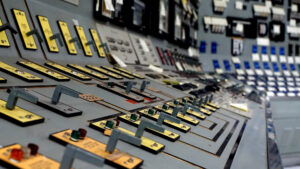Energy transition to depend on pace of industry upskilling
TRAINING and upskilling of the energy workforce will help determine the pace of the Philippines’ energy transition, the British embassy said. At a conference organized by Financial Executives Institute of the Philippines on Monday, Deputy Ambassador Alistair White said that getting the support needed for such upskilling is critical if the energy transition is to […]

TRAINING and upskilling of the energy workforce will help determine the pace of the Philippines’ energy transition, the British embassy said.
At a conference organized by Financial Executives Institute of the Philippines on Monday, Deputy Ambassador Alistair White said that getting the support needed for such upskilling is critical if the energy transition is to move forward.
“Upskilling people who have worked in the industry (will) ensure that they (are) able to access the benefit from the new economic opportunities which we are embracing,” Mr. White said.
Meanwhile, renewable energy developers are banking on energy storage systems to enable electricity delivery as the industry decarbonizes.
“One of the key parts of that is energy storage, batteries, pumped hydro — it doesn’t matter how you store it, as long as it’s relatively cheap,” according to Jonathan Back, ACEN Corp.’s group chief finance officer and chief strategy officer.
“All of these technologies have become lower in price as time has moved on and battery storage is also now in that category,” he added.
Mr. Back said that energy storage also needs to be deployed at “a gigantic scale” in order to “move renewables up the chain from being entirely intermittent to being a more dependable source of electricity.”
Vicente S. Pérez, Jr., chairman of Alternergy Holdings Corp. and a former Energy secretary, said the Philippines needs more energy storage systems to help address intermittency of renewables.
“We must have more energy storage — that could be pump storage, pump hydro, it could be flywheel, it could be battery farms — in order to (smooth out) intermittent power,” Mr. Pérez said.
The Department of Energy (DoE) is planning to conduct two green energy auctions this year, one of which involves integrated renewable energy and energy storage systems.
Separately, Swiss engineering company Sulzer said optimizing existing energy infrastructure could play a crucial role in the energy transition and promises a “practical way” to enhance energy security.
“The Philippines can benefit by balancing its energy transition with strategic investments in optimizing existing infrastructure such as rotating equipment to address power supply challenges and support the broader goal of reducing carbon impact,” Wong Chin Hean, Sulzer’s head of services for Southeast Asia, said in an e-mail interview.
Mr. Wong said that the Philippines, particularly the downstream sector, is facing struggles with “aging infrastructure and maintenance issues.”
“To deal with the need for constantly increasing demand, further efficiencies need to be unlocked — particularly in dealing with extending the service life of aging rotating equipment amid supply chain delays, the lack of OEM (original equipment manufacturer) repair services, and long lead times for spare parts,” he said.
Extending the life of current equipment, which may be pursued through retrofits, re-rates, and reverse engineering, offers a practical way to enhance energy security by increasing efficiency, reliability and output, while cutting carbon emissions.
“Instead of acquiring new equipment, extending the lifespan of existing assets has a significantly smaller carbon footprint,” Mr. Wong said.
Sulzer specializes in energy-efficient pumping, agitation, mixing, separation, purification, crystallization and polymerization technologies for fluids of all types. — Sheldeen Joy Talavera


















